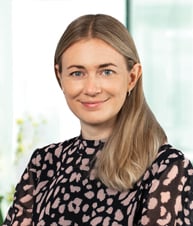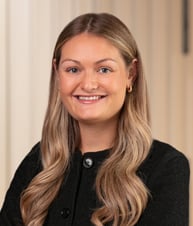Welcome to Alston & Bird’s quarterly update. In this issue, we share our key takeaways from our symposium on the rise of the GP-led market and single-asset deals.
INSIGHT: GP-LED MARKET AND SINGLE-ASSET DEALS
This quarter’s insight focuses on our top takeaways from one of our Alston & Bird symposiums hosted earlier this year by Saloni Joshi, partner in the Financial Services & Products Group, and four industry experts on GP-led transactions and single-asset deals.
Meet the experts:

GP-led transactions have become an increasingly attractive and lucrative liquidity solution for fund managers looking to hold onto trophy assets in place of more traditional exit routes, such as third-party sales or IPOs.
It might surprise some to learn that GP-leds have been around for approximately 15 years. Similar to the LP-led market, GP-leds first came about as a means to restructure portfolios in more distressed-type scenarios. In recent years, however, there has been a real shift from distressed to quality, and this trend was accelerated by the pandemic. This was largely because GPs anticipated traditional liquidity routes to be much more difficult to achieve during Covid, and so GP-led transactions emerged as a more elegant way to hold onto good quality assets and allow managers to maximise value.
GP-led transactions have recently surpassed LP-led transactions in terms of annual volume growth, making up more than half the secondary market, and even with the current public market downturn and conflicts that we are seeing around the world, investor appetite looks set to remain strong.
Below are our five key takeaways from this engaging session.
1. Clear commercial rationale, alignment, and red flags
The words ‘rationale’ and ‘alignment’ were used several times during the discussion with our experts, deeming these to be the two most important characteristics of any successful GP-led transaction, with alignment underpinning all else. Regardless of quality (asset or manager), there has to be a clear, commercial rationale for the deal. Ask yourself – why does it make sense for this asset to be continued to be owned by these specific people? Is there a realistic and tangible conviction in the company? The latter is an even more pertinent question for those in the mid-market and lower mid-market space, as it is sometimes the case that the asset may have outgrown that particular manager. When there is a clear rationale and strong alignment between the GP and the investors, it is usually a win-win situation for all parties involved.
The process has become more of a well-trodden path, but the panellists emphasised the importance of starting conversations with investors early. It was noted that many of the fund’s existing investors, such as pension funds and smaller endowments, are not always staffed to be able to make the decision on whether to roll into the continuation fund or to cash out (where their day job is primary investing). Give LPs enough time to process all the information and materials provided in the data room – which is by no means a small task.
It is worth noting that alignment for the underlying management teams is equally important in these transactions.
Stapled commitments, while highly desirable for GPs, can often be a red flag for secondary buyers. This is more about a longer-term relationship and one that many investors would not be willing to assume unless there are key economic drivers at play.
2. The role of intermediaries and process
Many of our experts receive a large proportion of their GP-led deals through intermediaries (as opposed to directly from the manager, which is more typical for smaller transactions). Intermediaries are usually heavily involved throughout the process, which our experts would expect to see to ensure proper process and to mitigate certain conflicts that commonly arise with the GP acting as both buyer and seller.
3. Pricing and valuations
Pricing is undeniably fundamental when considering any GP-led transaction, but the pricing will always be driven by rationale and alignment. You cannot fix misalignment with price. It is also important to recognise that the NAV (the primary valuation tool used in the secondary market) will not always reflect the true potential of an asset, and deals may be carried out at a large premium for this very reason. It is also important to ask ‘what is the value of this business had Covid / the political situation in Europe not existed’ – this involves significant due diligence on the part of secondary buyers.
4. Elite economics
GP-led transactions often allow GPs the opportunity to reset economics and re-invigorate the management team, allowing sponsors to demonstrate alignment to LPs. Investors should look for: (1) a meaningful GP commitment; and (2) a roll-over of crystallised carry into the new vehicle (if the same investment professionals are involved in the deal). As single-asset GP-leds have been focused on top-tier assets, the panellists have seen GP-friendly economics in recent years. It was noted, however, that tiered carry is generally considered market standard.
5. What’s next for the GP-led market?
GP-led continuation fund deals for single assets or concentrated portfolios are becoming increasingly attractive to a wider range of GPs (including many GPs across the midmarket). In a more challenging economic environment, deal drivers will be less about retaining ‘trophy assets’ and more about retaining assets that may require significant cashflows to fund follow-ons and capital expenditure for those assets.
Items to watch:
- NAV-backed leverage. Fund financing with recourse to the fund’s underlying portfolio is not a new feature on the fund financing landscape. However, its use in GP-led transactions has increased in recent years, and that trend is likely to continue as a means to bridge pricing misalignment between buyers and sellers.
- Conflicts and the SEC. Managing conflicts in a fair way and navigating the inherent tension between existing investors and raising follow-on capital from a secondary buyer is inherent in GP-led deals. It is also an area that both investors and regulators, in particular the SEC, are increasingly focused on. The SEC has proposed the following requirements, amongst others, with the aim of creating more transparency for investors: (1) one-day reporting of transactions; and (2) mandatory fairness opinions.
- Convergence to M&A. We are also starting to see more traditional M&A players getting into this market (i.e. taking a third of the deal, rather than the 80% they would have taken had this been sold rather than being part of a GP-led process), which could bring with it more deal protection technology borrowed from those markets.
The GP-led market remains buoyant, and given the number of successful fundraisings in the space, together with the volume of dry capital available for deployment, this level of activity continues. Interestingly, while the market has matured, investors have also become more sophisticated and selective in their review processes.
WEBINAR SERIES RESOURCES
The following links may be used to access the recorded sessions of other topics in the Alston & Bird webinar series:
Cracking the Liquidity Code: Delivering Private Equity to Mass Affluent Investors: First-mover private asset managers are taking advantage of new structures to reach the enormous mass affluent investor market. We show, with a special emphasis on the key innovation, a novel liquidity mechanism offered by Nasdaq and recently approved by the SEC.
Democratizing Access to Private Markets: As companies stay private longer and value creation shifts to private markets, we explore the ways asset managers and entrepreneurs are creating investment vehicles, tools, and platforms to expand private market participation.
Trends in Private Funds: Hear from our panellists about current market trends related to cyber rules, litigation and enforcement, proposed marketing rule and Form PF updates, access funds, and secondary offerings.
PODCAST SERIES
Alston & Bird’s EU Women’s Initiative is producing a podcast series, Open Forum, where our attorneys and their professional connections delve into timely topics.
Our March episode is a conversation with an inspirational woman, Manon Mendez, a principal at Blackstone Credit, and discusses the role of the distressed investor in the current market and important topics such as culture cultivation and talent selection. In June, Jessica Liew, senior manager of operations at Aurelius, discussed the importance of impactful leaders and how they shape the professional careers of those they manage. We invite you to listen here!
Alston & Bird’s Private Funds & Secondaries Bulletin is produced by Alston & Bird’s Financial Services & Products Group and is edited by Saloni Joshi, Megan Lau, and Lauren Burton.


